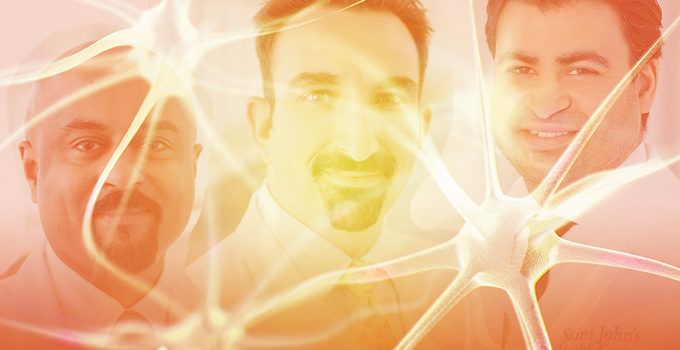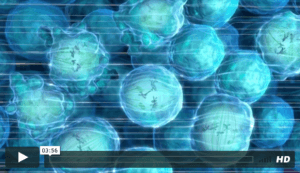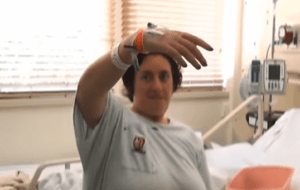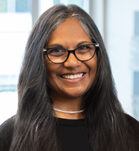

Brain Science Research Initiatives
by Zara Jethani
Neurosciences and Neurotherapeutics
Brain-based disorders are among the most challenging conditions to treat. However, the neurosciences faculty at Pacific Neuroscience Institute and the Saint John’s Cancer Institute is at the forefront of some of the most promising and innovative approaches in treating brain tumors and other neurological conditions. Here’s a look of some of our projects.
Noninvasive Brain Modulation Technology
 For the first time in more than a decade, patients with glioblastoma (GBM) have a noninvasive treatment option shown to increase survival with minimal adverse events. Our physicians were among the first to embrace technology that uses alternating electrical fields, called tumor treating fields (TTFields), within the human body to disrupt dividing cancer cells.
For the first time in more than a decade, patients with glioblastoma (GBM) have a noninvasive treatment option shown to increase survival with minimal adverse events. Our physicians were among the first to embrace technology that uses alternating electrical fields, called tumor treating fields (TTFields), within the human body to disrupt dividing cancer cells.
The alternating electrical fields are applied to the brain through electrodes placed on the scalp. The device is worn continuously. One device, Optune®, a portable unit developed by Novocure, is approved by the Food and Drug Administration. As a leader in enrolling patients to clinical trials of the device, Santosh Kesari, MD, PhD, has opened an investigator-initiated clinical trial of Optune in combination with chemotherapy for patients with low-grade gliomas.

Dr. Kesari and Garni Barkhoudarian, MD, also are examining an alternate non-thermal, battery-operated, investigational medical device, called the Nativis VoyagerTM System, that takes a similar noninvasive approach. Dr. Barkhoudarian is the principal investigator of that clinical trial, which is also for patients with glioblastoma.
Neuro-Regeneration
 Stem cells are unique types of cells that have the ability to renew, creating identical copies of themselves as well as the ability to divide and form cells that make up every type of tissue found in the body. Stem cells are the topic of intense scientific focus for a variety of diseases, such as stroke. Millions of people live with lingering side effects linked to stroke, such as paralysis, difficulty speaking or cognitive problems. Stem cells may be able to help repair brain tissue that was damaged by stroke.
Stem cells are unique types of cells that have the ability to renew, creating identical copies of themselves as well as the ability to divide and form cells that make up every type of tissue found in the body. Stem cells are the topic of intense scientific focus for a variety of diseases, such as stroke. Millions of people live with lingering side effects linked to stroke, such as paralysis, difficulty speaking or cognitive problems. Stem cells may be able to help repair brain tissue that was damaged by stroke.

Achal Singh Achrol, MD, and Dr. Kesari are investigators of a Phase II clinical trial, sponsored by San Bio, Inc. and Sunovion, examining whether bone marrow-derived stem cells can be used safely and effectively in people with chronic motor deficits resulting from ischemic stroke. These investigational cells are directly injected into the cranium, and participants are monitored for safety and functional outcomes.
Dr. Achrol is a coauthor of a 2016 paper, published in Frontiers in Neurology, exploring the various sources for cell-based therapies and how to select the optimal source for stem cells. Dr. Achrol is also coauthor of a 2016 paper exploring the potential for stem cells to be used in treatments for glioblastoma.
Family Caregiver Burden
 Cancer frequently exacts a heavy toll on the family members of patients. Studies show, however, that family support can influence patient outcomes, and it’s important to understand the role of family members and target resources to help them cope. Marlon Saria, PhD, RN, director of the Center for Quality and Outcomes Research, is studying how to advance the care of patients and their caregivers through data-informed interventions. Dr. Saria has published papers on the burden of caregivers of patients with brain metastasis and on how cognitive dysfunction in these patients influences caregiver resilience and coping.
Cancer frequently exacts a heavy toll on the family members of patients. Studies show, however, that family support can influence patient outcomes, and it’s important to understand the role of family members and target resources to help them cope. Marlon Saria, PhD, RN, director of the Center for Quality and Outcomes Research, is studying how to advance the care of patients and their caregivers through data-informed interventions. Dr. Saria has published papers on the burden of caregivers of patients with brain metastasis and on how cognitive dysfunction in these patients influences caregiver resilience and coping.
Currently, Dr. Saria is conducting a study of caregiver burden among family caregivers of cancer patients. The study will look at the distress and coping behavior of family caregivers of patients with cancer to see how future intervention studies can be developed to reduce caregiver burden and improve outcomes for the many individuals caring for family members with cancer. He is also preparing a study to assess the effects of integrating family caregiver support into cancer clinical trials on the well-being of the caregiver, the care recipient and on the cancer clinical trial system.
Radiogenomics
 Over the past few decades, oncologists have learned that cancer patients can respond to medications differently depending on the specific genetic characteristics of that patient’s cancer. Now the same concept is being applied to the field of imaging and radiation therapy. The field is called radiogenomics—or imaging genomics—and our researchers are exploring the concept in order to improve patient care. Studies have shown that images taken of a tumor, such as an MRI, can reveal characteristics that suggest a tumor’s particular genetic subtype.
Over the past few decades, oncologists have learned that cancer patients can respond to medications differently depending on the specific genetic characteristics of that patient’s cancer. Now the same concept is being applied to the field of imaging and radiation therapy. The field is called radiogenomics—or imaging genomics—and our researchers are exploring the concept in order to improve patient care. Studies have shown that images taken of a tumor, such as an MRI, can reveal characteristics that suggest a tumor’s particular genetic subtype.
Dr. Achrol is actively involved in this emerging field and is a coauthor of several studies establishing a radiogenomic map—a link between image features and underlying molecular data or markers—that has potential to provide a noninvasive assessment of the underlying molecular characteristics of a glioblastoma tumor, information that can help steer treatment decisions. His work has demonstrated that image-based biomarkers of glioblastoma subtypes can be differentiated and may be a substitute for intensive molecular analysis of the tumor in a laboratory. An image-based approach would avoid the risks of biopsy.
Dr. Achrol’s work on imaging genomics earned him the prestigious Mahaley Award for Best Neuro-oncology Research from the Congress of Neurological Surgeons and National Brain Tumor Society in 2015.
Neuro-Innovation and Surgical Techniques
 Some types of skull-base and brain tumors can be treated by using minimally invasive endoscopic surgery. This type of surgery reduces the risk to patients and hastens recovery because tumors are removed through small openings in the skull or through a natural orifice, such as the nose.
Some types of skull-base and brain tumors can be treated by using minimally invasive endoscopic surgery. This type of surgery reduces the risk to patients and hastens recovery because tumors are removed through small openings in the skull or through a natural orifice, such as the nose.
Our physicians are leaders in the use and evolution of innovative neurosurgical advances. As director of the Pacific Brain Tumor Center Skull Base Microdissection Anatomy Laboratory at the Pacific Neuroscience Institute, Dr. Barkhoudarian conducts research to expand the understanding of surgical anatomy and keyhole approaches and on evaluating outcomes of pituitary and brain tumor surgery. He is a coauthor of a 2016 paper on evidence-based guidelines on surgical techniques and technologies for the management of patients with nonfunctioning pituitary adenomas, published in the journal Neurosurgery.
He is also involved in the biomarkers research program for pituitary adenomas, meningiomas and metastatic brain tumors, as well as evaluating potential mechanisms and markers that may suggest how a tumor may progress.
For more information on supporting the department of translational neurosciences and neurotherapeutics, please contact Mary Byrnes in the Office of Development at 310-582-7102.
Adapted from the original article in INNOVATIONS, SPRING 2017 published by Saint John’s Cancer Institute at Providence Saint John’s Health Center.
About the Author

Zara Jethani
Zara is the marketing director at Pacific Neuroscience Institute. Her background is in molecular genetics research and healthcare marketing. In addition, she is a graphic designer with more than 20 years experience in the healthcare, education and entertainment industries.
Last updated: September 9th, 2019